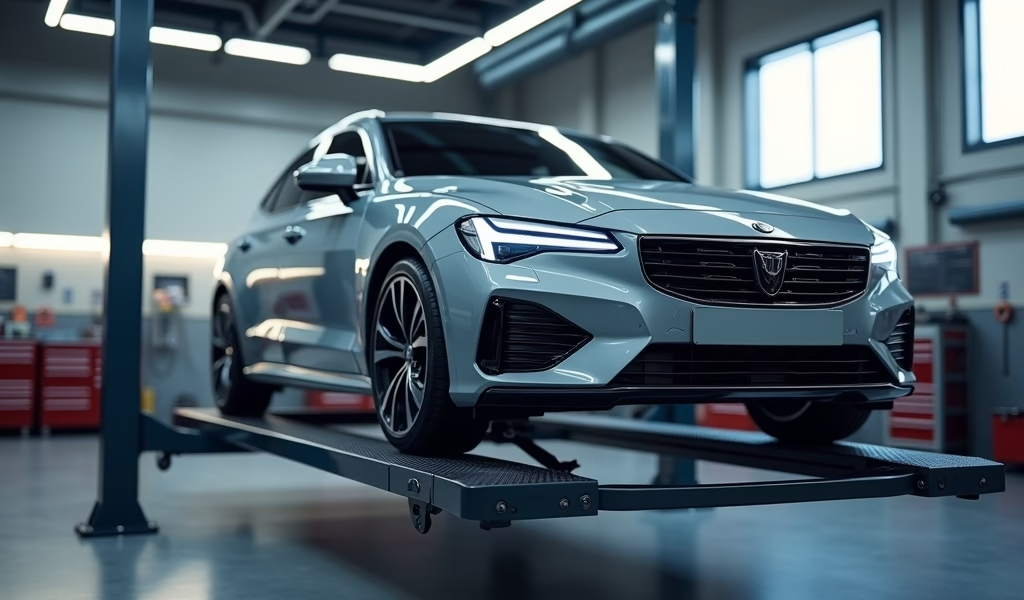Overview
This guide explains why proper maintenance is essential for vehicles purchased with 0% APR deals, covering critical service schedules, seasonal care, warning signs, DIY vs. professional repairs, and budgeting strategies. Following recommended maintenance not only protects the initial financial advantage of a zero-interest loan but also maximizes vehicle longevity, safety, and resale value while preventing expensive emergency repairs.
Table of Contents
- Understanding 0% APR Deals: More Than Just Free Money
- Maintenance Essentials: Keeping Your Investment Protected
- Critical Maintenance Schedule: Timing Is Everything
- Seasonal Care: Preparing Your 0% APR Vehicle For Weather Changes
- Warning Signs: When Your Car Is Begging For Attention
- DIY vs. Professional: Knowing When To Roll Up Your Sleeves
- Maintenance Budgeting: Planning For Long-Term Care
- Extending Vehicle Life: Small Habits With Big Returns
- Conclusion: Maximizing Your 0% APR Investment
- Frequently Asked Questions
So you’ve snagged one of those coveted 0% APR car deals that had you practically dancing in the dealership. First off, congratulations! That new car smell combined with interest-free payments is like finding the automotive holy grail. But here’s the catch that most folks overlook: that shiny interest-free loan is just the beginning of your relationship with your new ride.
As a master mechanic with 20+ years under my greasy fingernails, I’ve seen too many 0% APR beauties turn into money pits because their owners mistakenly thought “no interest” meant “no maintenance.” Let me walk you through everything you need to know about keeping your financial victory lap going for the long haul.
Understanding 0% APR Deals: More Than Just Free Money
Those glossy 0% APR deals are like sirens calling to your wallet—irresistibly attractive, but potentially dangerous if you don’t read the fine print. These financing arrangements often come packaged with specific maintenance requirements that, if ignored, could void warranties or even violate your financing terms.
Before you get lost in that new car euphoria, take a moment to understand what you’ve actually signed up for. Many of these agreements require service at authorized dealerships following a predetermined schedule. It’s like getting a puppy from a breeder who requires certain vet visits—ignore them at your peril.
The smart move? Thoroughly review your paperwork for:
- Mandatory service intervals
- Required documentation to maintain warranty coverage
- Whether services must be performed at specific locations
- What constitutes a warranty violation
Remember, that seemingly innocent maintenance clause could have serious financial implications if overlooked. It’s the automotive equivalent of ignoring the fine print on a prenup—it might seem unimportant now, but could come back to haunt you later.

Critical Maintenance Schedule: Timing Is Everything
Your 0% APR car isn’t just a financial arrangement—it’s a complex machine with its own heartbeat and rhythm. Following the proper maintenance schedule is like giving your car the regular doctor visits it needs to stay in peak condition.
Oil Changes: The Lifeblood Timeline
Think of engine oil as your car’s bloodstream. Modern vehicles typically need changes every 5,000-7,500 miles, but your owner’s manual (the bible of your specific model) will spell out exactly what yours needs. Skip this fundamental maintenance, and you might as well be pouring sand into your engine.
While you’re handling the oil change, don’t neglect these other vital fluids:
- Transmission fluid (check every 30,000-60,000 miles)
- Brake fluid (inspect every 25,000 miles)
- Power steering fluid (check with each oil change)
- Coolant/antifreeze (flush every 30,000 miles)
- Windshield washer fluid (top off monthly)
Each of these fluids is like a specialized worker in the factory of your engine—ignore one, and the whole operation suffers.
Tire Rotation and Pressure: Where the Rubber Meets Reality
Your tires are the only part of your vehicle actually touching the road, making them critical to both safety and performance. Rotate them every 5,000-7,500 miles (conveniently coinciding with oil changes) to ensure even wear. According to research from the Department of Energy, proper tire pressure alone can improve fuel economy by up to 3%—not a bad return on a five-minute investment with a tire gauge.
Brake System: When Stopping Means Everything
That pedal under your right foot might seem simple, but it’s connected to one of your vehicle’s most sophisticated safety systems. Have your brakes inspected every 10,000 miles, and pay attention if they start making noise—those squeals aren’t your car singing along to the radio. They’re desperate cries for new pads before more expensive components get damaged.
Battery Care: Your Electrical Heartbeat
The average car battery lasts 3-5 years, but extreme temperatures can cut that lifespan considerably. Have your battery tested annually, especially before winter sets in. A $15 battery test can prevent the frustration (and potential danger) of being stranded with a dead car in less-than-ideal circumstances.
Filter Replacements: Your Car’s Immune System
Your vehicle uses several filters to keep contaminants at bay:
- Air filter: Replace every 15,000-30,000 miles to protect your engine
- Cabin air filter: Change every 15,000-25,000 miles to keep your breathing air clean
- Fuel filter: Swap every 30,000-60,000 miles to ensure proper fuel delivery
These filters are your car’s immune system—neglect them, and your vehicle becomes susceptible to all sorts of preventable problems, just like skipping your vitamins would impact your own health.
Seasonal Care: Preparing Your 0% APR Vehicle For Weather Changes
Cars, like people, need different care as the seasons change. Your vehicle doesn’t wear a winter coat, but it certainly needs seasonal adjustments to perform its best year-round.
Spring/Summer Preparation
As temperatures climb, focus on:
- Air conditioning performance checks (before you really need it)
- Cooling system inspection (prevent those roadside boilovers)
- Battery testing (heat can be just as damaging as cold)
- Wiper blade examination (spring showers require reliable wipers)
- Tire pressure adjustments (heat causes pressure to increase)
Fall/Winter Readiness
Before the mercury drops:
- Test battery and charging system (cold weather is battery kryptonite)
- Verify antifreeze concentration (the name says it all—prevent freezing)
- Install winter tires if you live in snow country (all-seasons aren’t always enough)
- Check heater and defroster function (before that first frosty morning)
- Inspect all lights (shorter days mean more night driving)
- Prepare an emergency kit (blanket, flashlight, energy bars—winter survival basics)
Regional Considerations
Your location dictates additional maintenance needs:
- Coastal areas: Wash the undercarriage more frequently to prevent salt corrosion
- Desert regions: Pay extra attention to cooling systems and rubber components
- Snowy climates: Apply undercarriage protection against road salt
- High humidity areas: Watch for mold development in ventilation systems
Think of these seasonal adjustments as changing your car’s wardrobe to match the weather—a small effort that makes a big difference in comfort and performance.
Warning Signs: When Your Car Is Begging For Attention
Cars develop their own language to tell you when something’s wrong. Learning to interpret these signals can save you thousands in preventable repairs. Think of these warnings like your car sending you urgent text messages—ignore them at your peril.
The Symphony of Suspicious Sounds
Your vehicle should purr like a contented cat, not screech like an angry pterodactyl. Pay attention to:
- Squealing when braking: Your brake pads are waving the white flag
- Grinding when braking: You’ve ignored the squealing, and now metal is grinding on metal
- Knocking engine sounds: Potential serious engine issues requiring immediate attention
- Humming from wheels: Often signals bearing problems that could lead to catastrophic wheel failure
Dashboard Warning Lights: Automotive Morse Code
Those illuminated symbols aren’t Christmas decorations—they’re your vehicle’s most direct communication method:
- Check engine light: The automotive equivalent of “we need to talk”
- ABS warning: Your brake system needs attention before it fails when you need it most
- Battery light: Your electrical system is running on borrowed time
- Oil pressure warning: Stop driving immediately unless you’re shopping for a new engine
Performance Problems
When your car doesn’t behave normally, it’s crying out for help:
- Hesitation during acceleration: Fuel delivery or ignition issues
- Rough idling: Multiple potential causes requiring diagnosis
- Decreased fuel efficiency: Something’s making your engine work harder than it should
- Hard starting: Ignition or fuel system issues brewing
Fluid Leaks: Automotive Tears
Finding puddles under your parked car is never a good sign. Different fluids leave different calling cards:
- Clear/yellow/brown spots: Engine oil (color depends on age)
- Red/pink: Transmission or power steering fluid
- Green/orange: Coolant (sweet-smelling)
- Clear water: Usually just A/C condensation (normal)
- Brown/clear fluid: Brake fluid (requires immediate attention)

DIY vs. Professional: Knowing When To Roll Up Your Sleeves
In this YouTube era, the temptation to DIY everything is strong. While some maintenance tasks are perfectly suitable for home mechanics, others require professional expertise. Knowing the difference can save both money and potential damage.
Perfect DIY Projects
With basic tools and some research, many owners can confidently handle:
- Oil and filter changes (a Saturday morning project with coffee)
- Air filter replacement (often easier than changing a lightbulb)
- Wiper blade installation (follow the packaging instructions)
- Battery testing and replacement (mind the polarity!)
- Tire pressure checks (a $5 gauge can save hundreds in tire wear)
- Light bulb replacements (check your manual for access points)
Leave It To The Pros
Some jobs require specialized tools, expertise, or safety precautions:
- Brake system repairs (your life literally depends on them)
- Engine diagnostics (modern engines are computer networks with pistons)
- Transmission service (complexity varies, but mistakes are costly)
- Timing belt replacement (precision timing is essential)
- Electrical system troubleshooting (chasing electrical gremlins requires experience)
Record-Keeping: The Forgotten Maintenance Task
Whether you DIY or visit professionals, detailed service records are worth their weight in gold:
- Keep all service receipts (digital or physical)
- Use a dedicated maintenance log (an app or notebook works)
- Save parts warranties (they often exceed labor warranties)
- Document dates, mileage, and services performed
These records become invaluable for warranty claims and add significant resale value when you’re ready for your next 0% APR car deal. According to Kelley Blue Book, comprehensive service records can add hundreds to thousands to your vehicle’s resale value.
Finding Trustworthy Mechanics
Not all repair shops deserve your business. Look for:
- ASE-certified technicians (the industry standard for competence)
- Shops with specific experience with your make and model
- Clear communication practices (they explain findings in plain English)
- Detailed estimates before work begins (no surprise bills)
- Clean, organized facilities (a messy shop often means messy work)
Maintenance Budgeting: Planning For Long-Term Care
That 0% APR deal saved you money on financing, but responsible ownership means planning for ongoing maintenance costs. Think of it as the difference between your mortgage and your home maintenance fund—both are necessary parts of homeownership.
Creating Your Maintenance Fund
Smart vehicle ownership includes setting aside funds specifically for maintenance:
- Calculate annual maintenance costs (typically 1-2% of vehicle value)
- Set up a dedicated savings account or budget category
- Contribute monthly to smooth out larger expenses
- Plan for increasing costs as your vehicle ages
Think of maintenance funding as car-health insurance—regular small payments prevent financial emergencies down the road.
Cost Expectations By Vehicle Age
Maintenance costs follow this general pattern:
- Years 1-3: Lowest costs (mostly oil changes, filters, and tires)
- Years 4-6: Moderate costs (brakes, batteries, and other wear components)
- Years 7+: Higher costs (major systems reaching service intervals)
Luxury brands and technology-packed vehicles typically have higher service costs—a German luxury sedan will generally cost more to maintain than a Japanese economy car. But every vehicle, regardless of origin, requires maintenance investment.
The Economics of Prevention
The financial wisdom of preventative maintenance is crystal clear:
- Regular oil changes ($50-75) vs. engine damage ($3,000+)
- Timing belt replacement ($500-1,000) vs. engine rebuild ($3,500+)
- Brake pad replacement ($150-300) vs. rotor damage ($300-800)
- Coolant flush ($100-150) vs. radiator replacement ($500-1,000)
Every dollar spent on prevention potentially saves $10 in emergency repairs. It’s the automotive equivalent of the old saying: “An ounce of prevention is worth a pound of cure,” except in this case, it might be more like a pound of prevention saving a ton of cure.
Extending Vehicle Life: Small Habits With Big Returns
Beyond scheduled maintenance, how you drive and care for your vehicle dramatically impacts its longevity. These small habits cost nothing but attention yet deliver substantial returns on your investment.
Driving Habits That Save Thousands
Your driving style directly affects your vehicle’s health:
- Allow proper warm-up time in cold weather (30-60 seconds is usually sufficient)
- Avoid aggressive acceleration and braking (your car isn’t in a NASCAR race)
- Maintain steady speeds when possible (cruise control is your friend)
- Reduce unnecessary idling (modern engines don’t need it)
- Avoid overloading your vehicle (check your door jamb for weight limits)
Think of aggressive driving as the automotive equivalent of an unhealthy lifestyle—it might not show immediate effects, but it takes a cumulative toll on your vehicle’s systems.
Proper Storage Practices
When your vehicle sits unused:
- Keep the tank at least half full to prevent condensation
- Use a battery tender for extended storage periods
- Park in covered areas when possible to avoid UV damage
- Consider tire pressure and flat-spotting for long-term storage
- Use appropriate covers for outdoor storage
Cleaning Beyond Appearances
Regular cleaning isn’t just about looking good in the office parking lot:
- Wash regularly to prevent paint damage from environmental contaminants
- Apply wax to provide a protective barrier against UV rays and pollutants
- Clean bird droppings immediately to prevent paint etching
- Vacuum interiors regularly to prevent premature carpet and upholstery wear
- Condition leather to prevent cracking and deterioration
Fuel Quality Considerations
What you put in your tank matters more than you might think:
- Use the recommended fuel octane (higher isn’t always better)
- Consider top-tier gasoline with added detergents
- Add fuel system cleaners periodically (every 3,000-5,000 miles)
- Fill up at reputable stations with high volume turnover
- Keep your tank reasonably full in extreme weather
These small habits create a compound effect over time—like saving pennies that eventually become thousands of dollars.
Conclusion: Maximizing Your 0% APR Investment
That 0% APR deal you scored was just the opening chapter in your vehicle ownership story. The true measure of financial wisdom isn’t just getting a great deal at purchase—it’s maximizing that investment through proper care over the life of your vehicle.
By following this guide, you’re not just maintaining a car—you’re protecting an investment and ensuring thousands of miles of safe, reliable transportation. Your diligence will pay dividends through improved reliability, higher resale value, and fewer unexpected repairs.
Remember that maintenance isn’t an expense—it’s an investment with measurable returns. Each oil change, tire rotation, and inspection is a deposit in your vehicle’s health account, creating a compound effect of reliability over time.
Your 0% APR deal gave you a head start on financial smart car ownership. Now it’s up to you to maintain that advantage through consistent, knowledgeable care. Your wallet—and your future self—will thank you for it.
Frequently Asked Questions
Does getting 0% APR mean I need special maintenance?
No, the maintenance requirements are the same as any vehicle, but properly maintaining it protects your financial investment in the 0% deal. Regular servicing ensures you get the most value from your interest-free purchase.
Can I go to any mechanic with my 0% APR car, or must I use the dealer?
You can use any qualified mechanic unless your financing agreement specifically requires dealer servicing. Just keep detailed records of all maintenance to protect your warranty coverage.
How often should I service my 0% APR vehicle?
Follow your owner’s manual recommendations, typically every 5,000-7,500 miles for oil changes and 30,000 miles for major service intervals. These guidelines apply to all vehicles regardless of financing terms.
Will skipping maintenance void my car warranty?
Yes, neglecting manufacturer-recommended maintenance can void your warranty coverage. Always follow the service schedule and keep documentation of all maintenance performed.
Does regular maintenance really improve resale value?
Absolutely! Well-maintained vehicles with complete service records can command 10-15% higher resale values. This maintenance premium often exceeds what you spent on the maintenance itself.

